Get ready to shoot some hoops with a fun DIY mini basketball game made from craft sticks, cardboard, and a straw. It's a fun way to learn about energy while building a simple machine for a purpose.
The challenge is to use your engineering skills to design, build and then play with a mini basketball game.
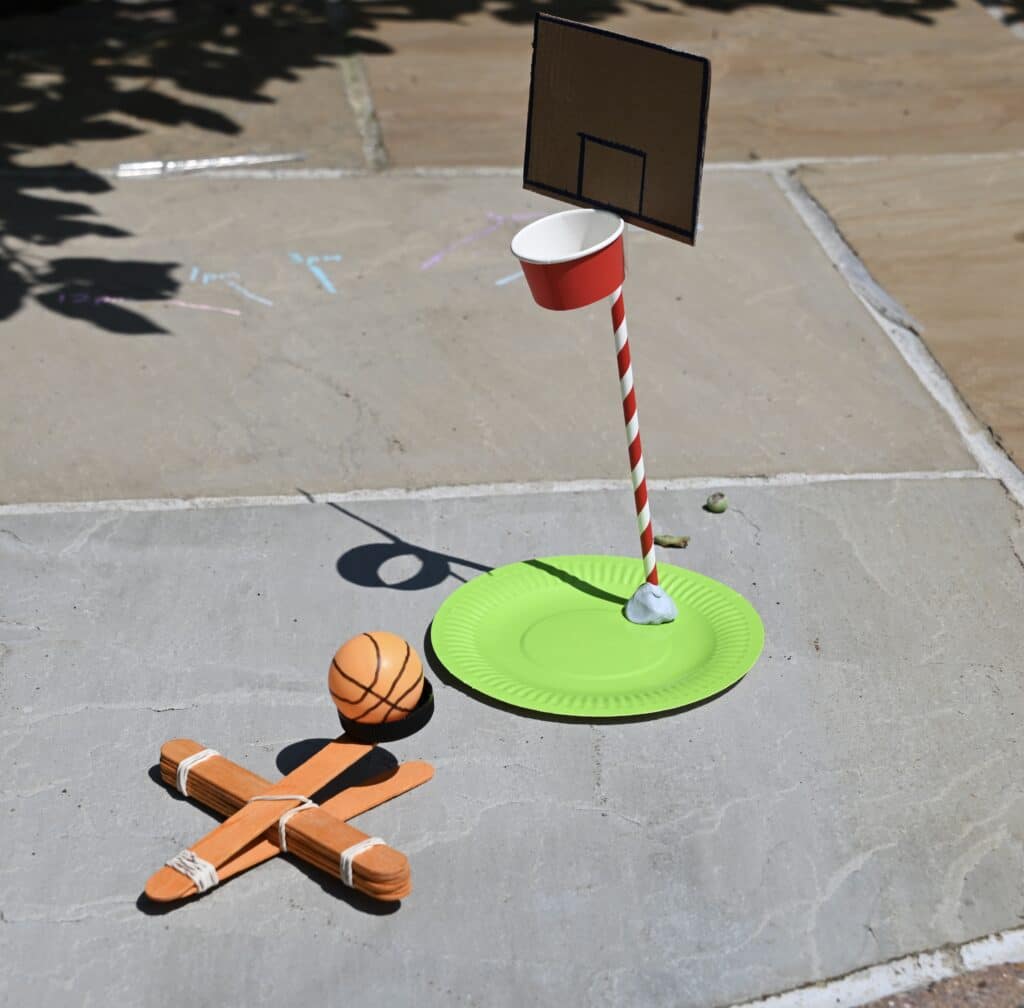
Mini Basketball STEM Challenge
You'll need
7 craft or lolly sticks
4 elastic bands
Table tennis ball or other small light ball
Craft materials
Tape
Instructions
Follow my instructions for making a simple lollystick catapult.
Gather together craft and recycled materials to build a basketball net.
Test your catapult and net!
Use my FREE STEM Challenge sheet to help with your design.
Things to think about
- The ball must fit through the hoop.
- The basketball hoop must be free-standing.
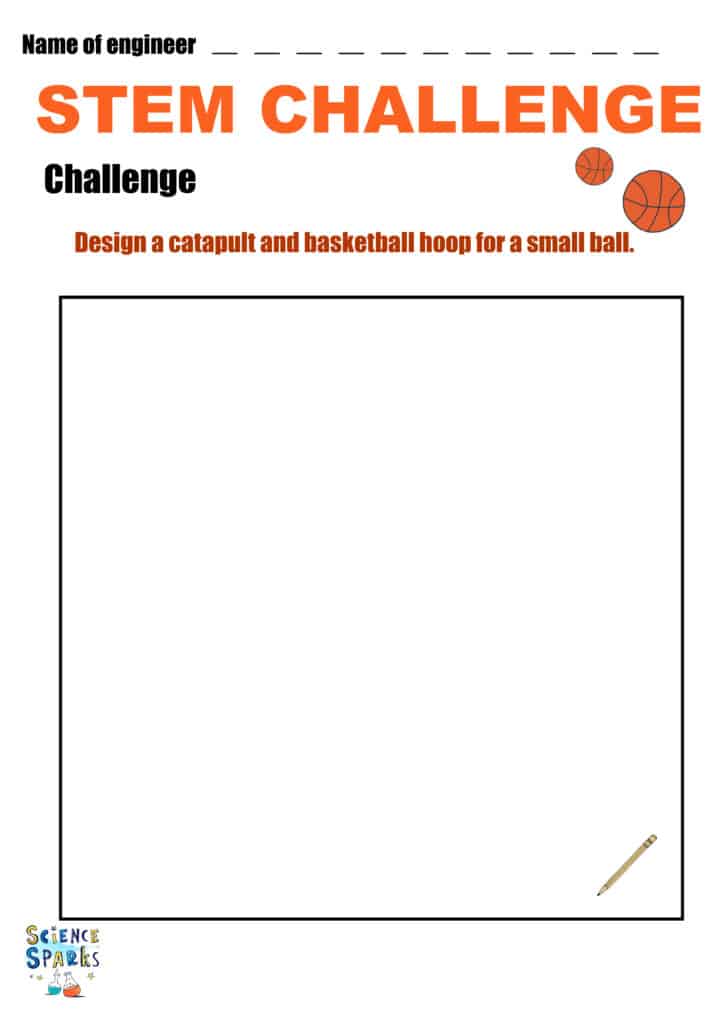
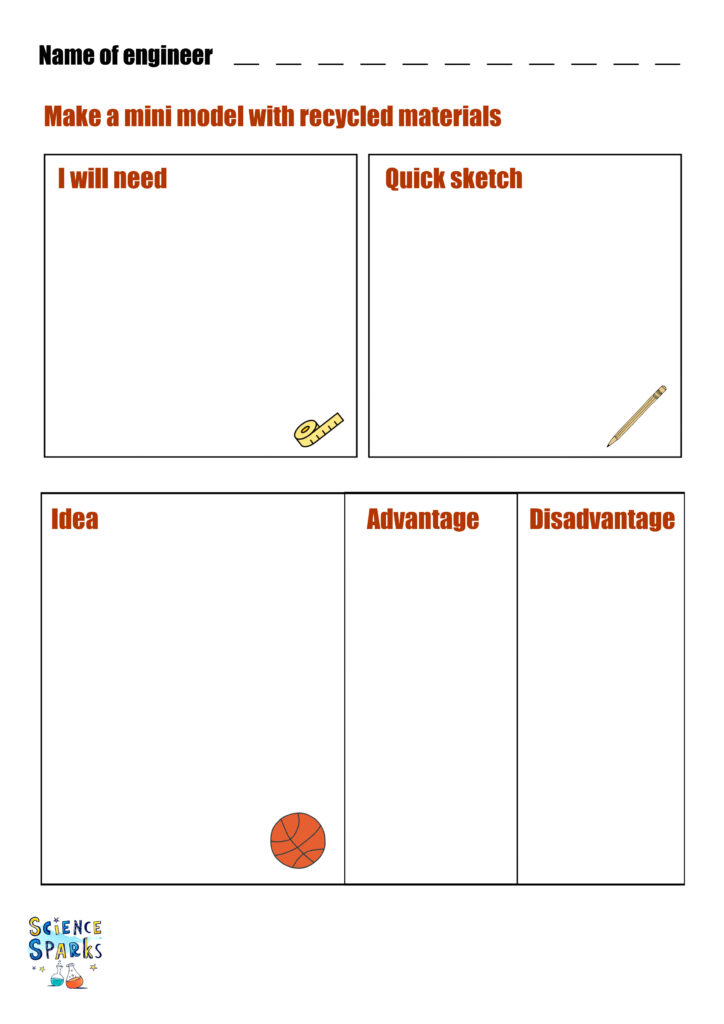
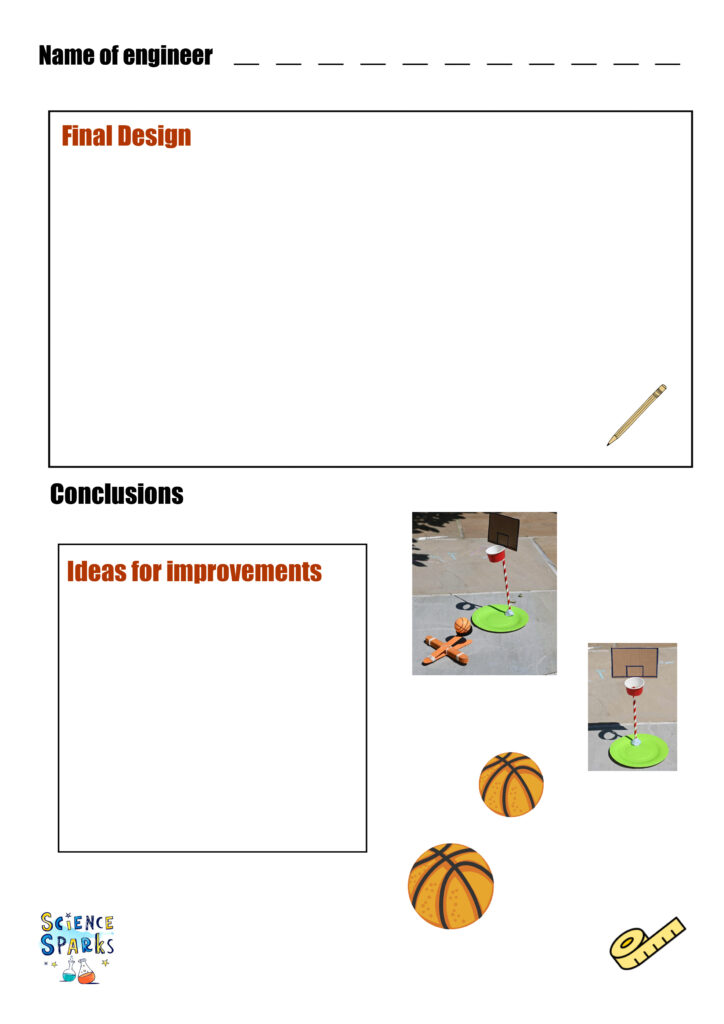
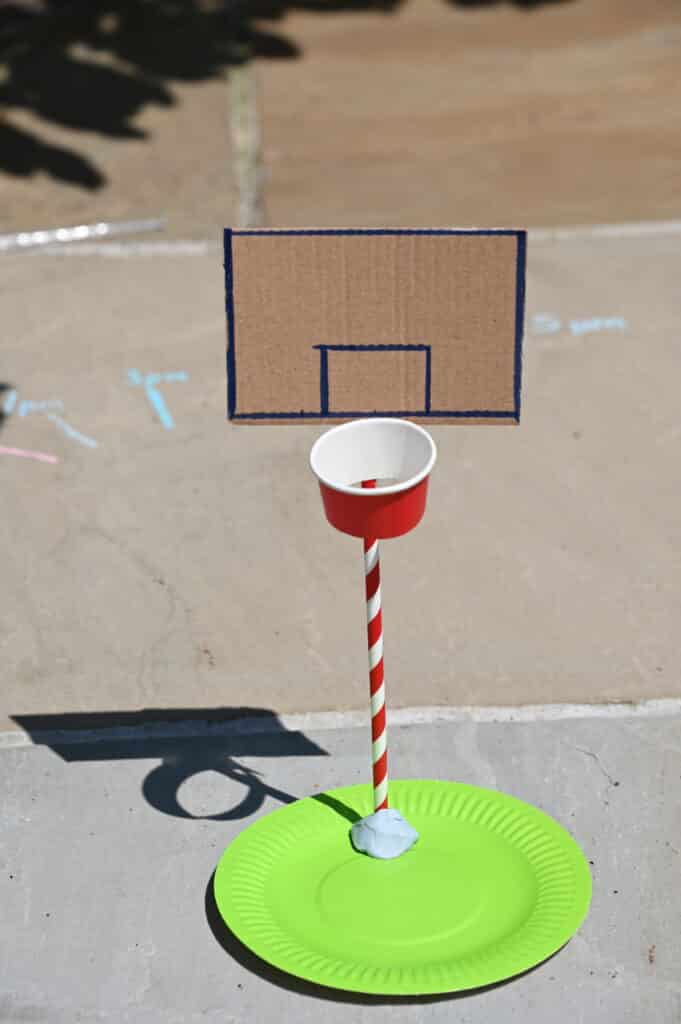
A lolly stick catapult is a fantastic demonstration of transfer of energy. When the catapult arm is pushed down, it stores potential energy, which is transferred to the ball as kinetic energy when the arm is released.
How does a catapult work?
When the catapult arm is released, it springs back to its original shape, and the rubber bands contract, propelling the arm upwards. Kinetic energy is transferred from the catapult arm to the ball, which gains kinetic energy and is launched into the air.
Factors that affect a lollystick catapult
The amount of stored energy - the further the arm is pushed down, the more elastic potential energy is stored, leading to a more powerful launch.
The angle of the launch - for maximum horizontal distance, the launch angle should be about 45 degrees.
The weight of the ball—lighter projectiles usually fly further than heavier balls when the same amount of force is used, as less force is needed to accelerate them.
Flexibility of the sticks and elastic bands - more flexible materials can store more energy.
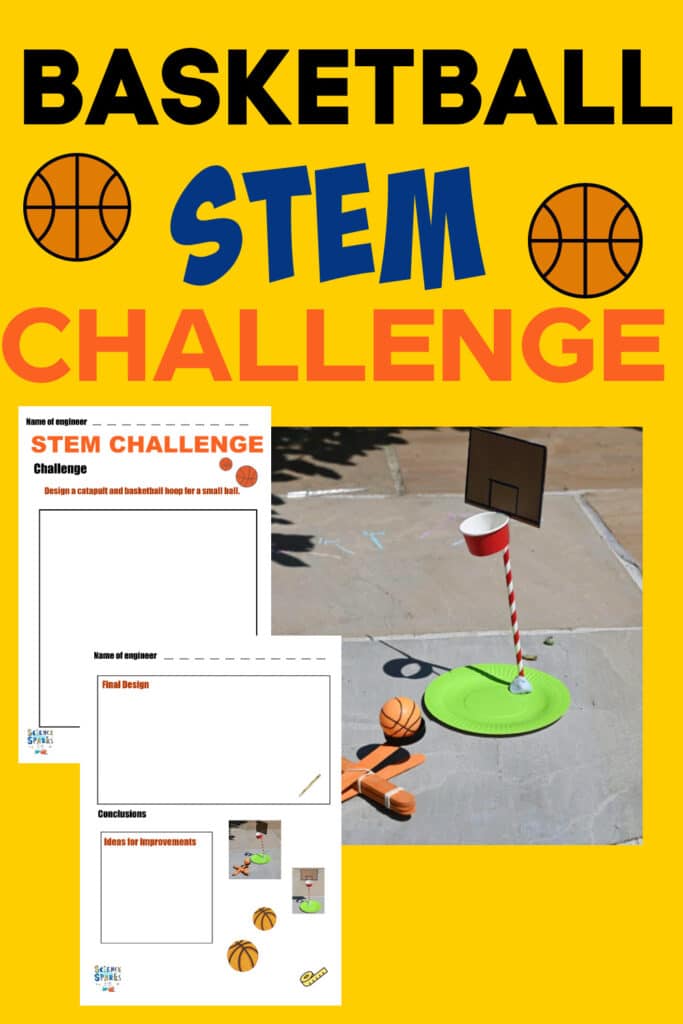
Last Updated on November 27, 2025 by Emma Vanstone



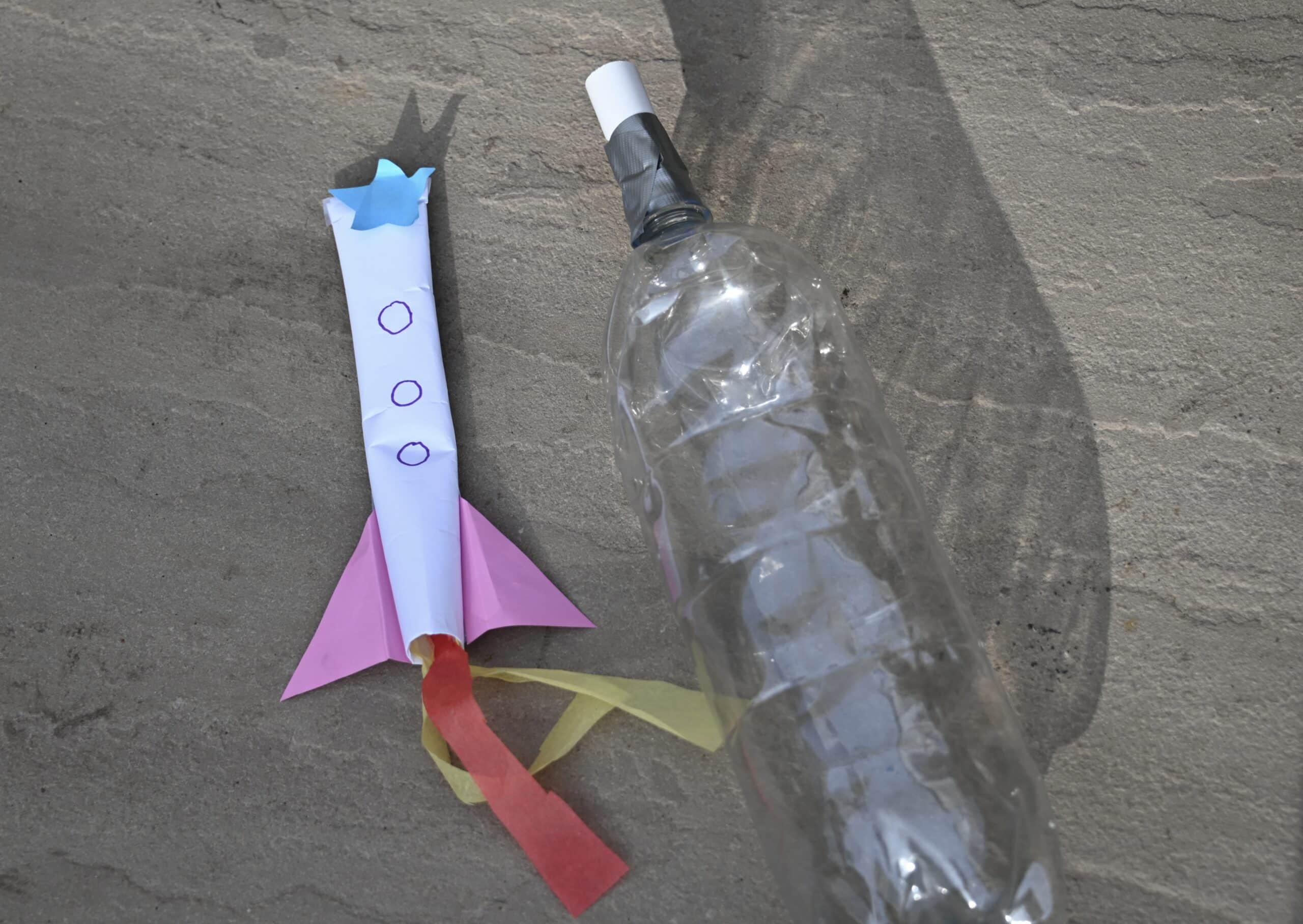
Leave a Reply